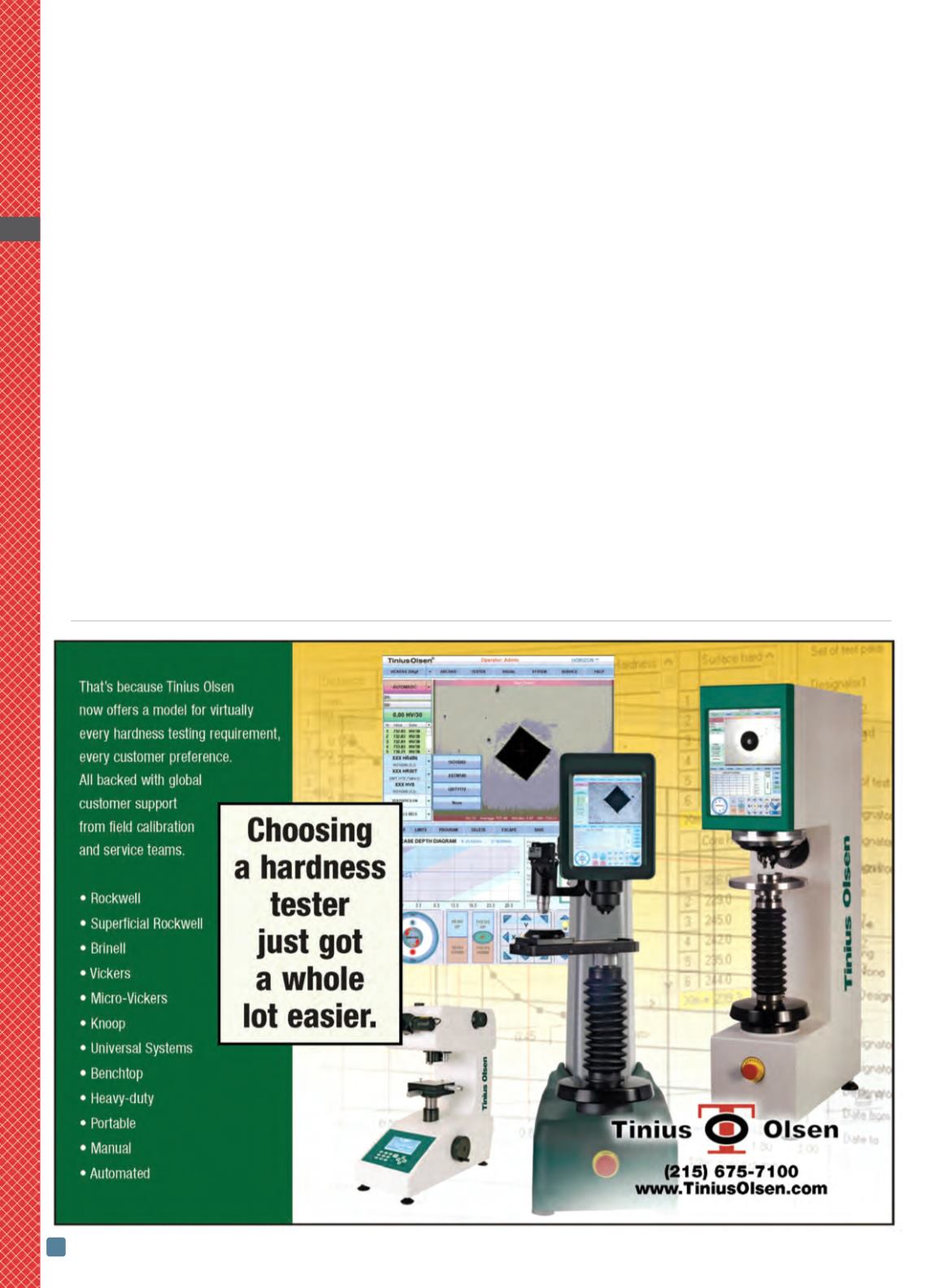

ADVANCED MATERIALS & PROCESSES •
JUNE 2014
44
8
HTPRO
Submerged water-cooling pipes and jack-
ets are suitable only for small systems, and
there is always the risk of water contami-
nation of oil quenchants, which should be
avoided at all costs. Water contamination
of polymer quenchants is not critical. Ex-
ternal water-cooled heat exchangers and
air-cooled radiators are very efficient and
widely used for cooling large quenching
systems. For oil quenchants, air-cooled
heat exchangers are nearly always used in
the U.S. to prevent potential fires from
water in quench oil. For polymer quen-
chants, water and chillers are predomi-
nately used. Air-cooled heat exchangers
are generally limited to cool a quenchant
to approximately 10°C (20°F) above ambi-
ent temperature. Because most polymer
quenchants should be used around room
temperature, the use of chiller water or
other means is mandated by temperature
and heat exchanger constraints.
To obtain maximum efficiency from
cooling systems, the direction of circula-
tion should be such that hot quenchant
is removed from the top of the tank and
then passed through the heat exchanger.
Once cooled, the oil is returned to the
bottom of the tank. Generally, the heat
exchanger should be sized to recover the
heat within one quench cycle. The equa-
tions above can be used to determine
the size of the heat exchanger:
Q
=
M
m
Cp
m
D
T
m
where
Q
is the total heat that must be
extracted from the quenchant. This is
the total heat given up by the quenched
metal to the quenchant. To properly size
the heat exchanger, the heat from the
workload should be completely recov-
ered prior to the next load. For instance,
assume that an integral quench furnace
is quenching an 1820 kg (4000 lb) charge
into a 15,140 liter (4000 gal) quench tank
at 60°C (140°F). The load is quenched
from a temperature of 870°C (1600°F)
and extracted from the quench at 65°C
(150°F). The cycle time from one load
quenching until the next load quenching
is 90 minutes. The heat exchanger must
recover this heat from the quench oil to
return the temperature of the quench
back to the original temperature of 60°C.
Substituting and solving the equation
gives:
Q
=
M
m
Cp
m
D
T
m
= 4000 (0.17)
(1600 - 150) = 986,000 Btu
The heat exchanger must extract nearly
one million Btu from the oil in 90 min-
utes to recover the oil temperature. In
other words, the heat exchanger must
be rated for at least 660,000 Btu/hr (194
kW). There also must be an adequate
safety factor to compensate for differ-
ent heat treating cycles and ambient
conditions.
Conclusions
This brief article describes the basics of
sizing quench tanks for immersion
quenching and offers a methodology for
sizing the temperature-control system. It
is recommended to contact your quen-
chant supplier or heat-exchanger supplier
for more detailed, precise determinations
for specific applications.
HTPRO
Formore information:
D. ScottMacKen-
sie is research scientist – metallurgy,
Houghton International Inc., Valley Forge,
PA 19482, 610.666.4007,
smackenzie@ houghtonintl.com,
houghtonintl.com.


















